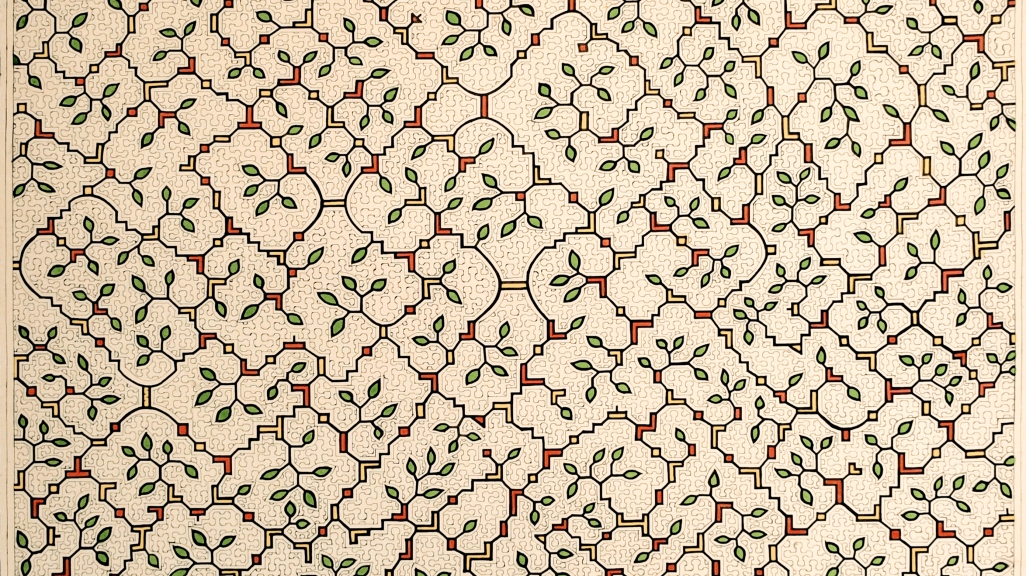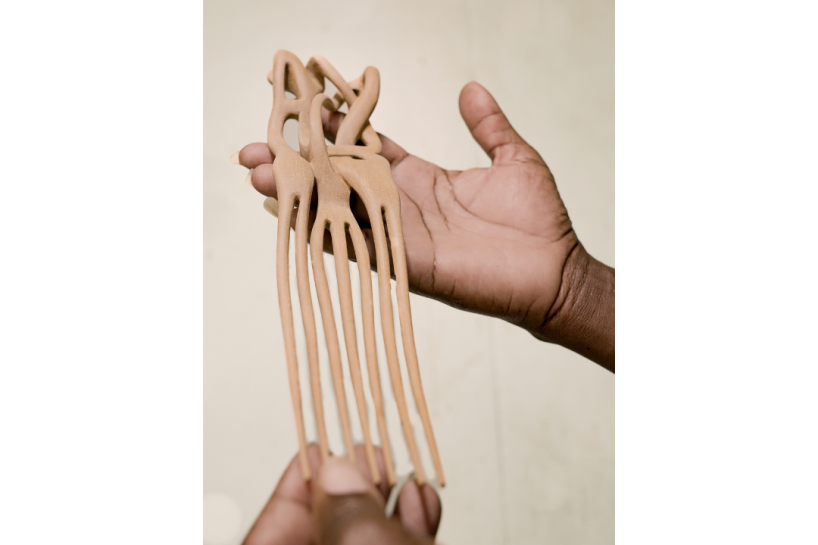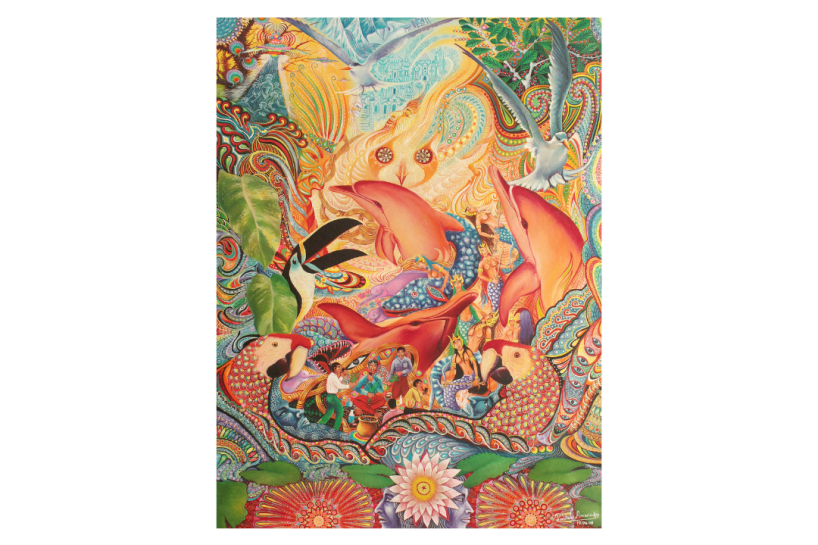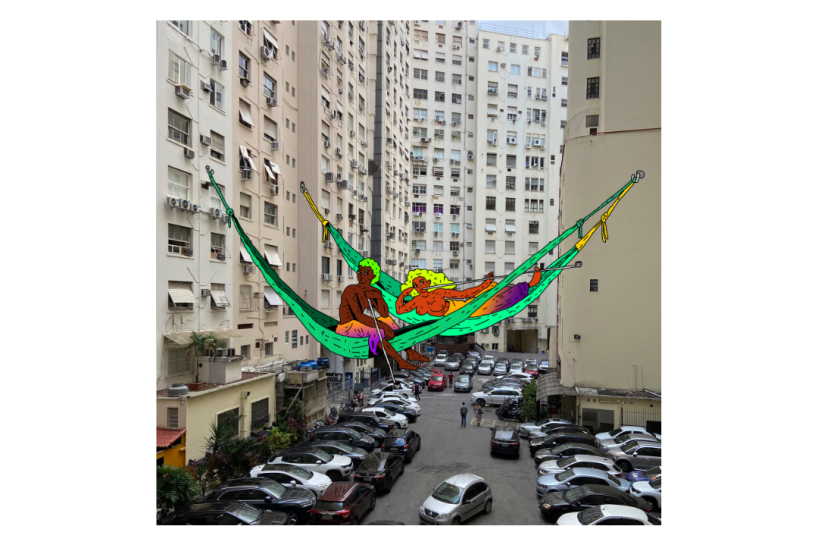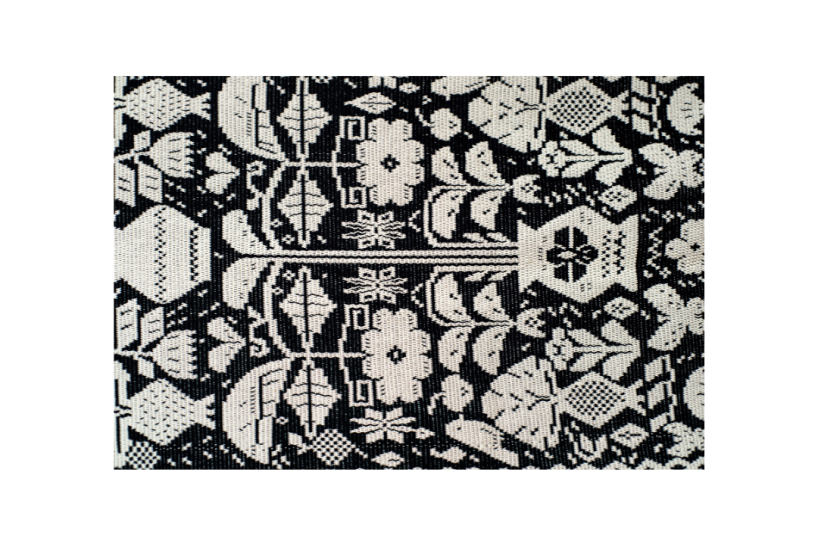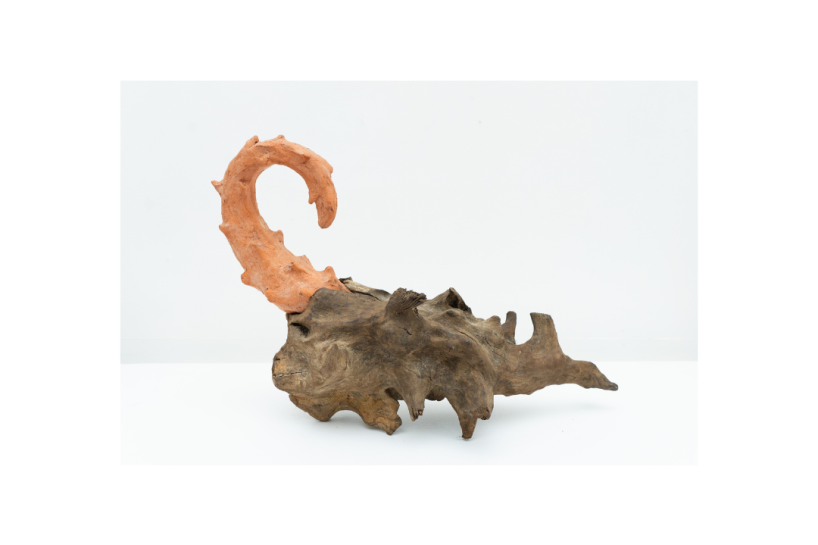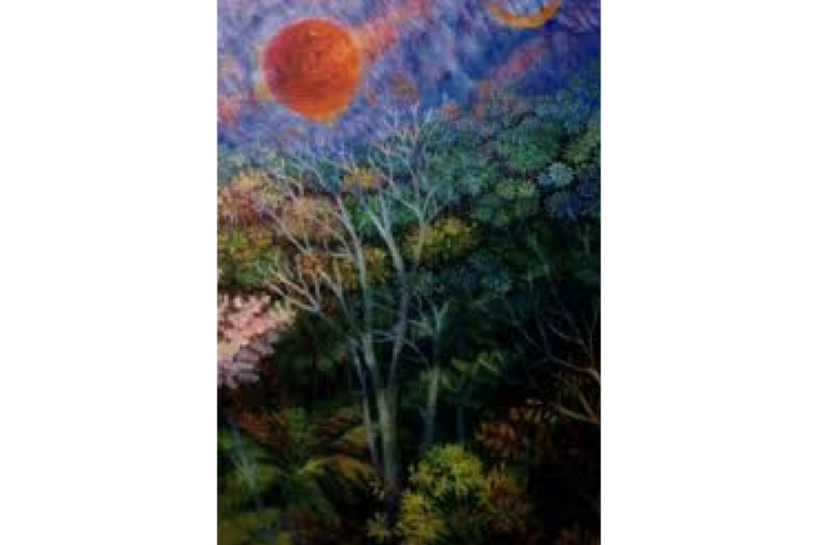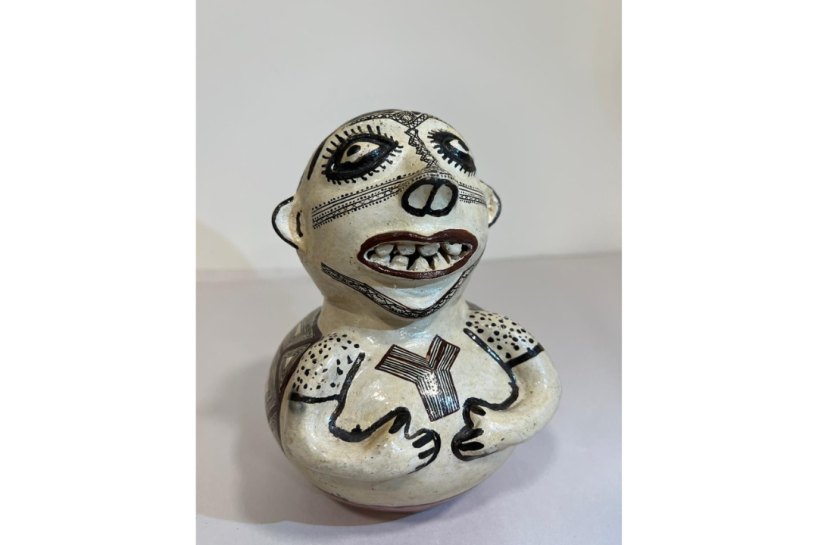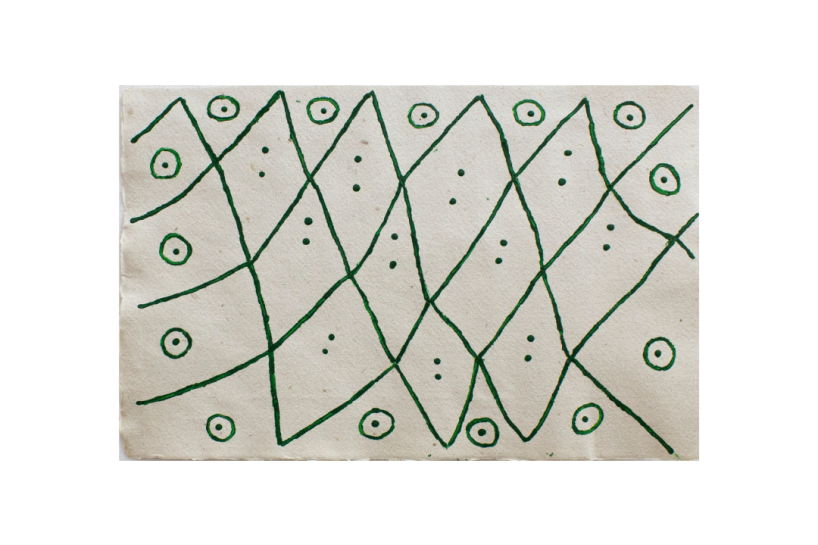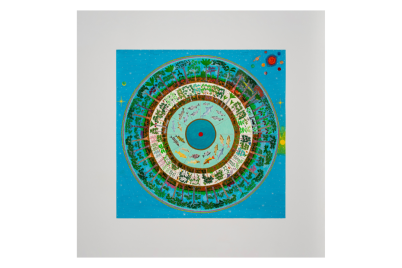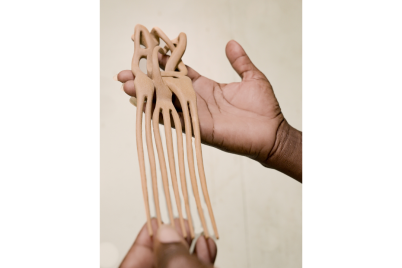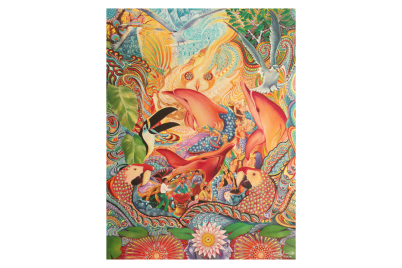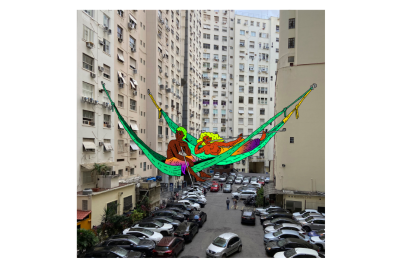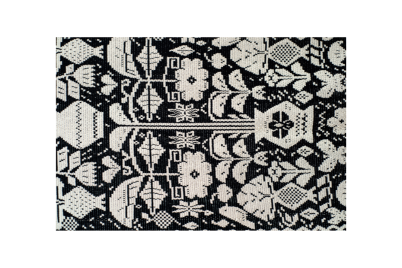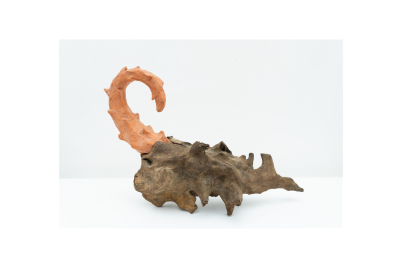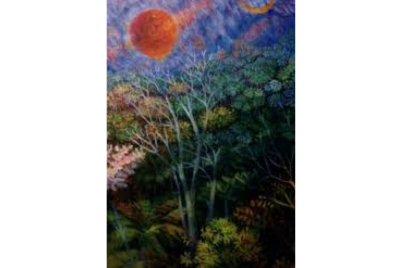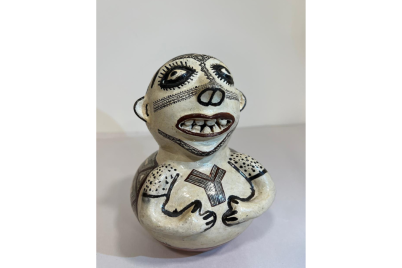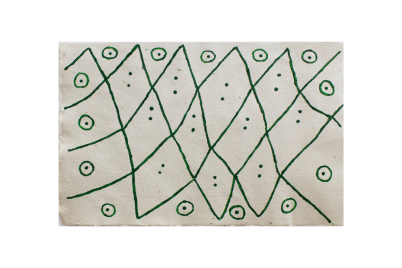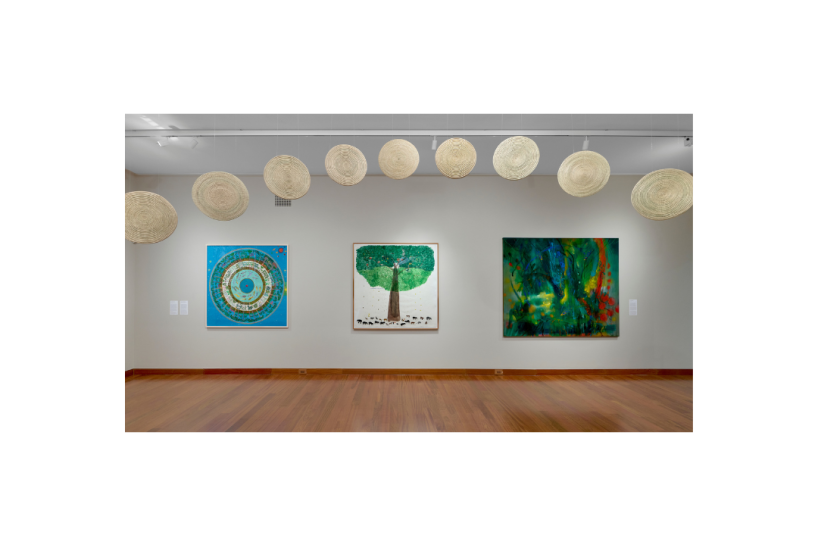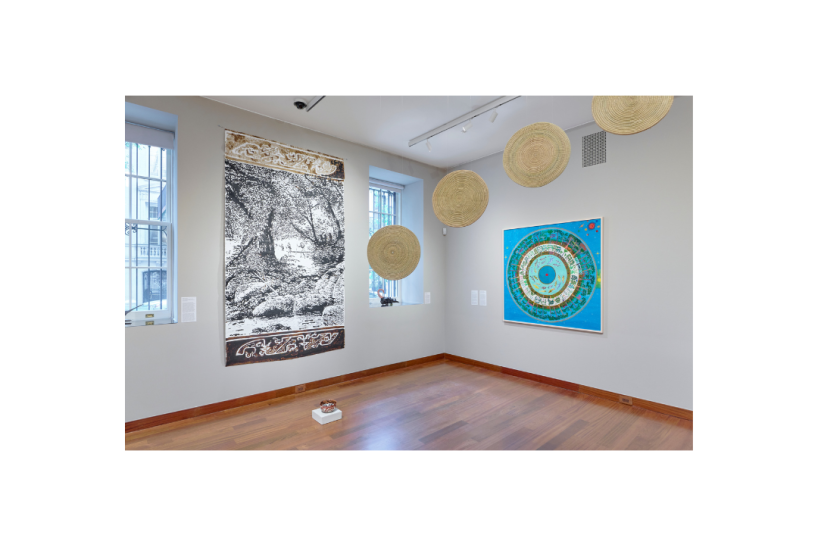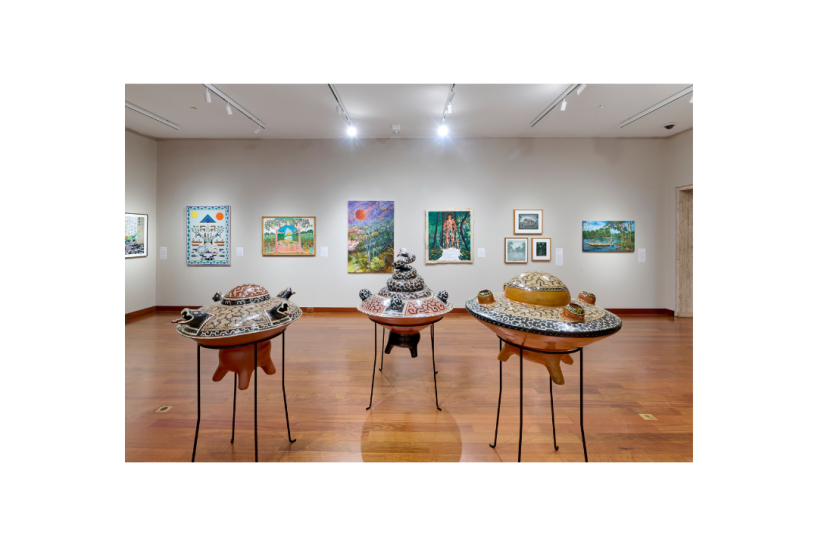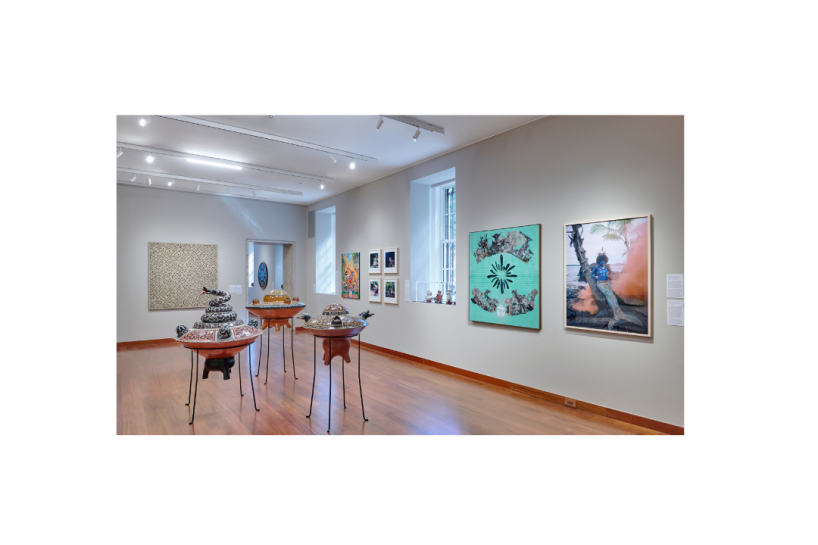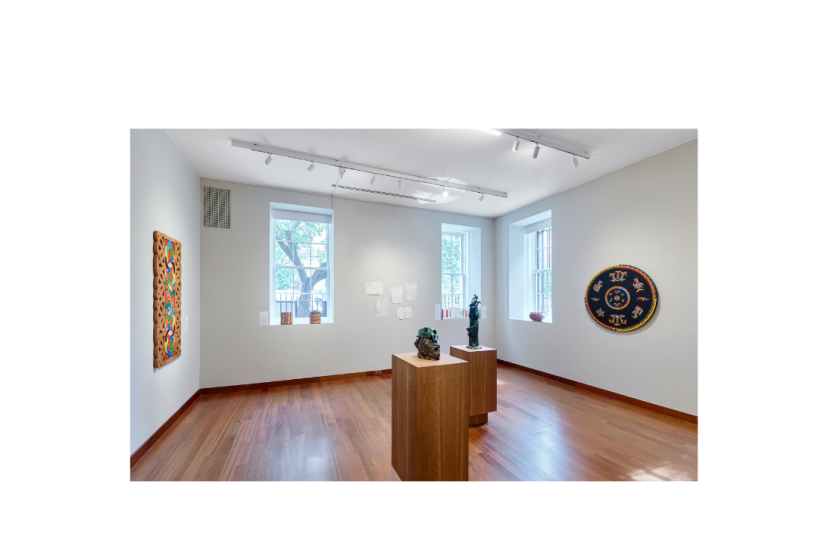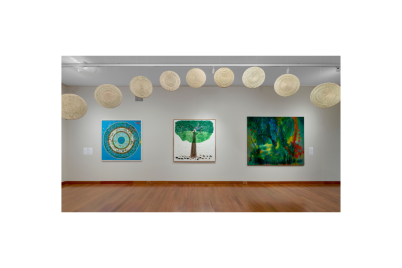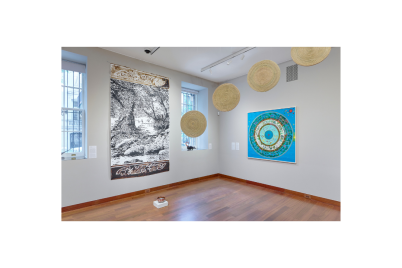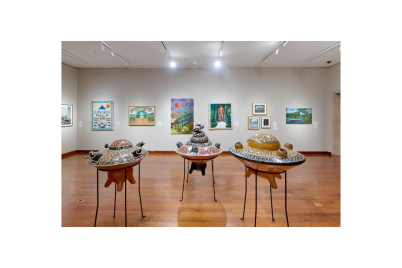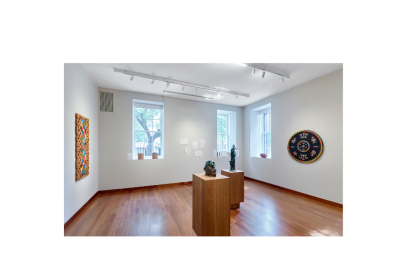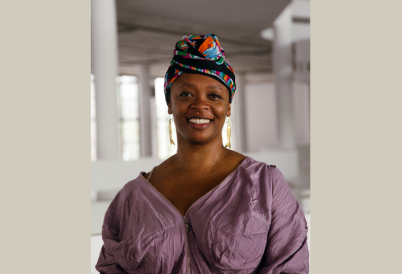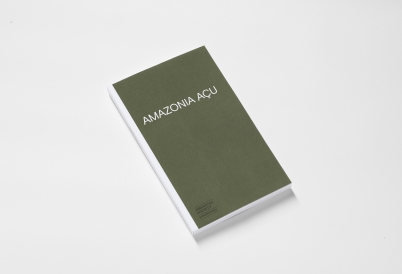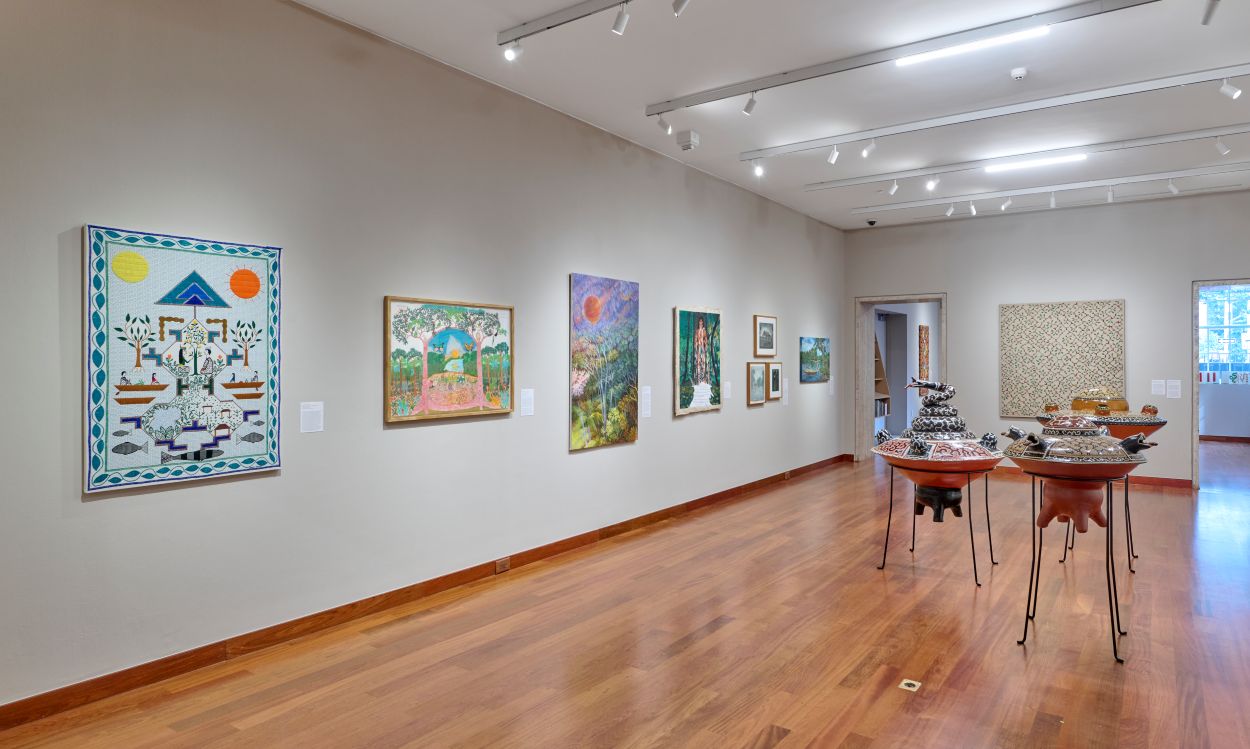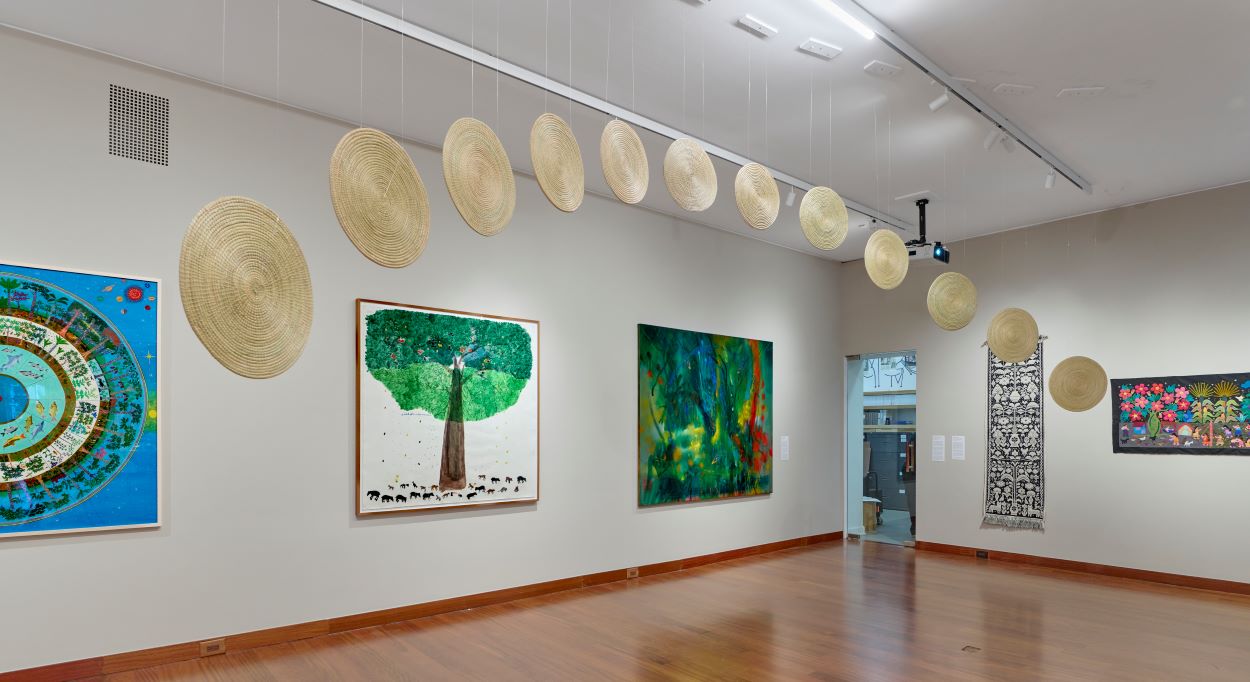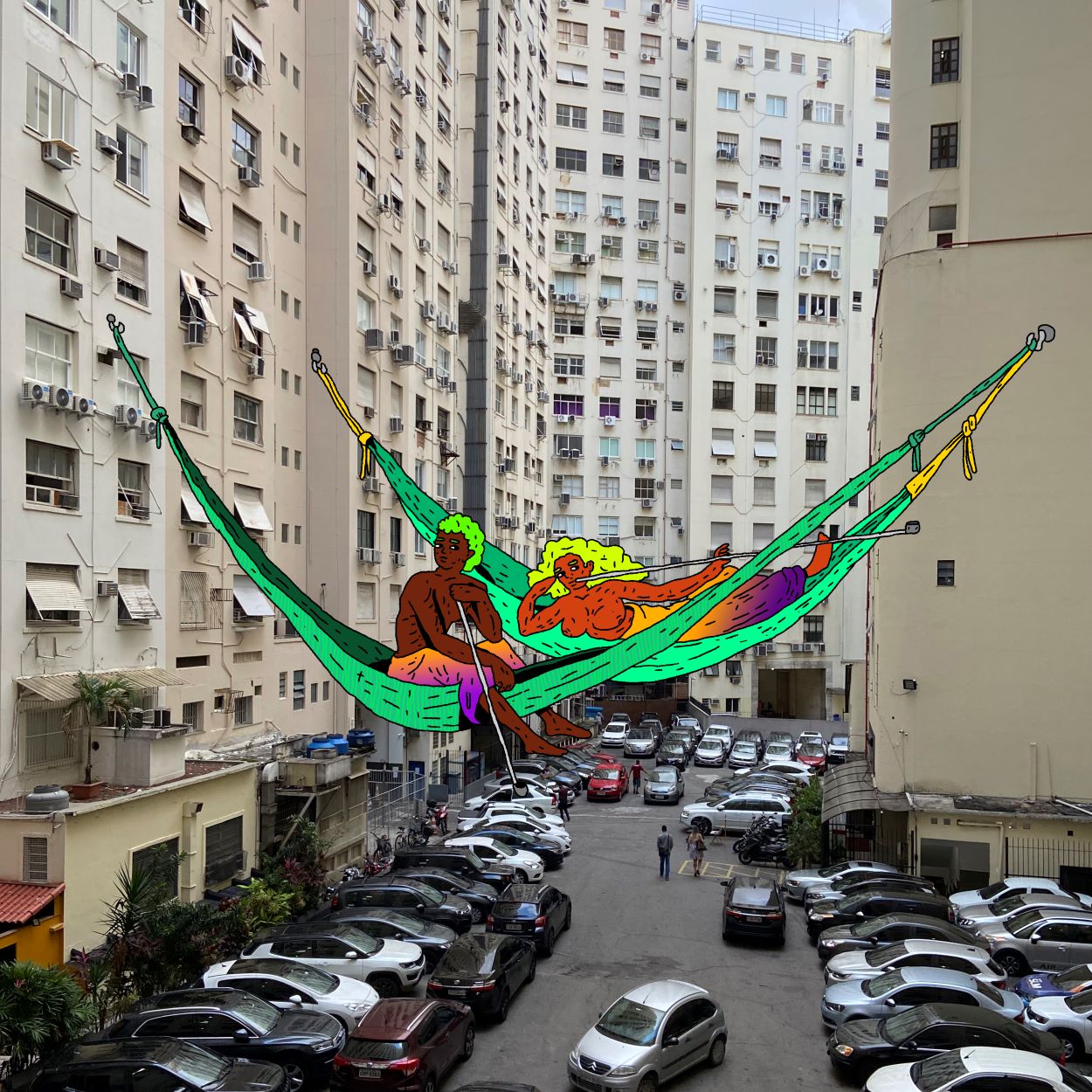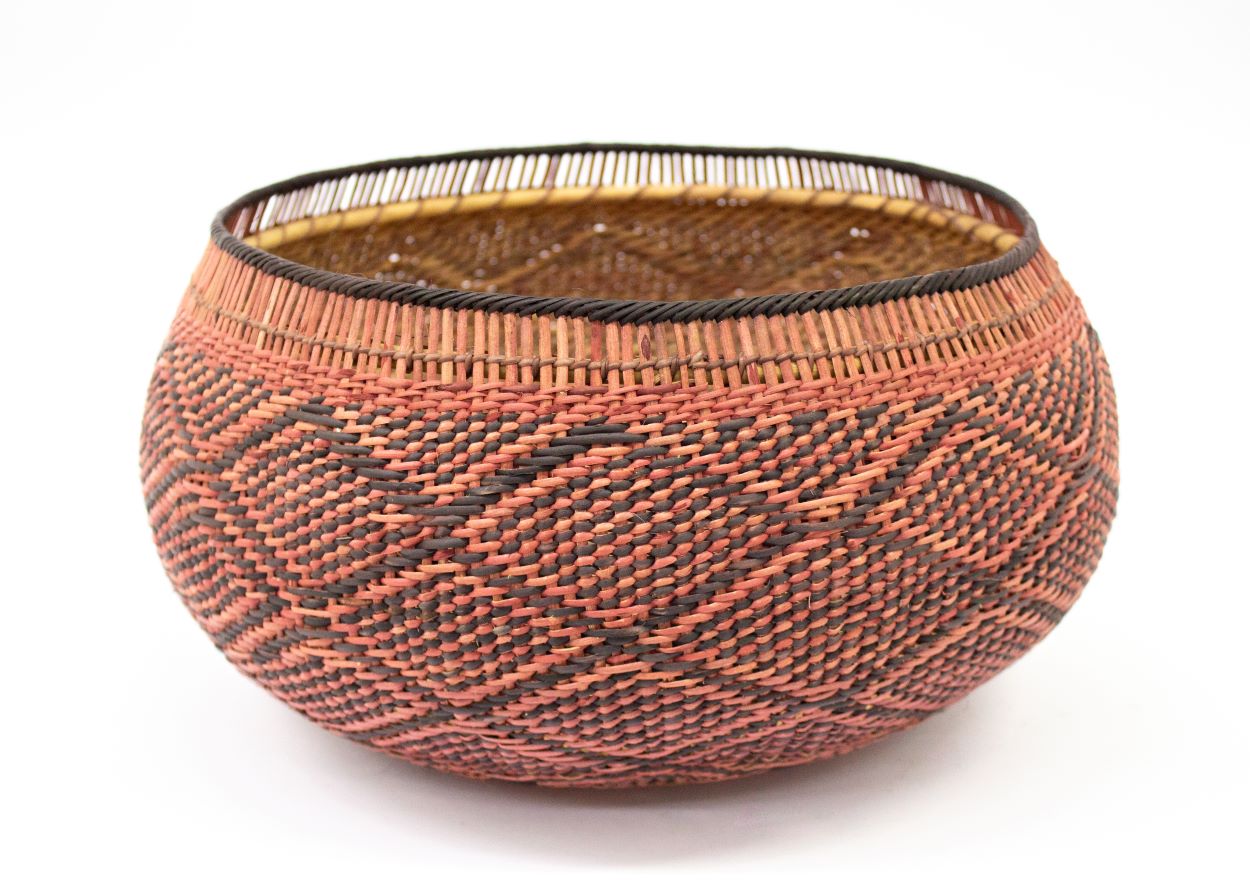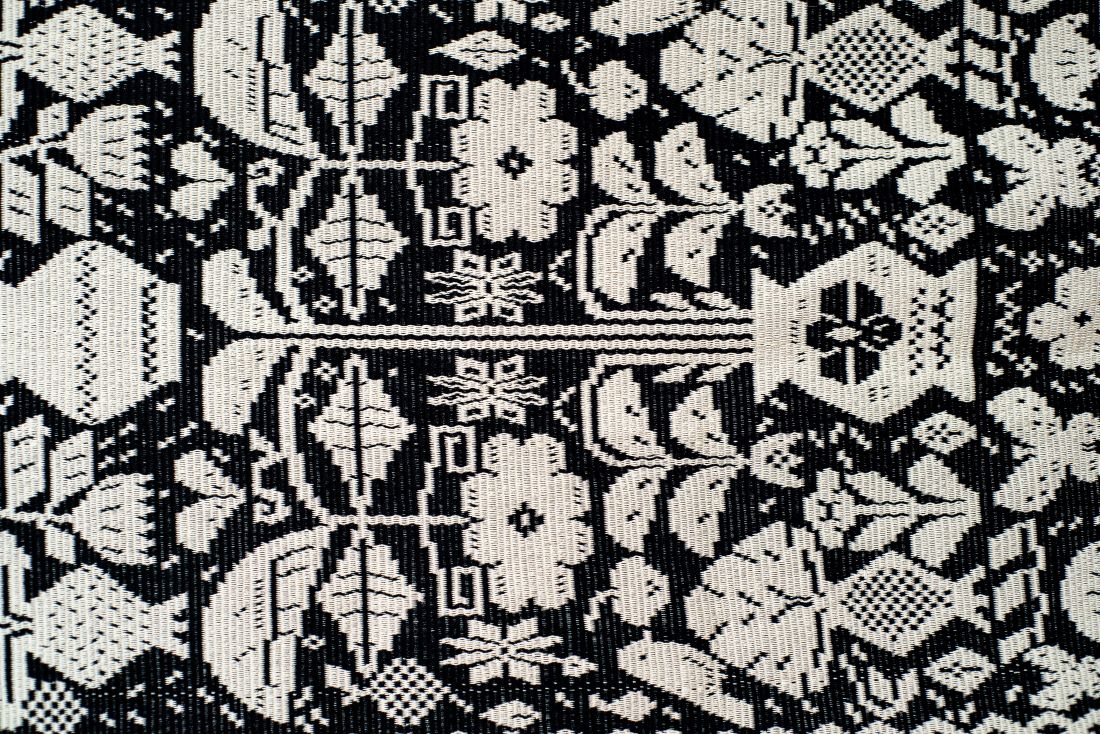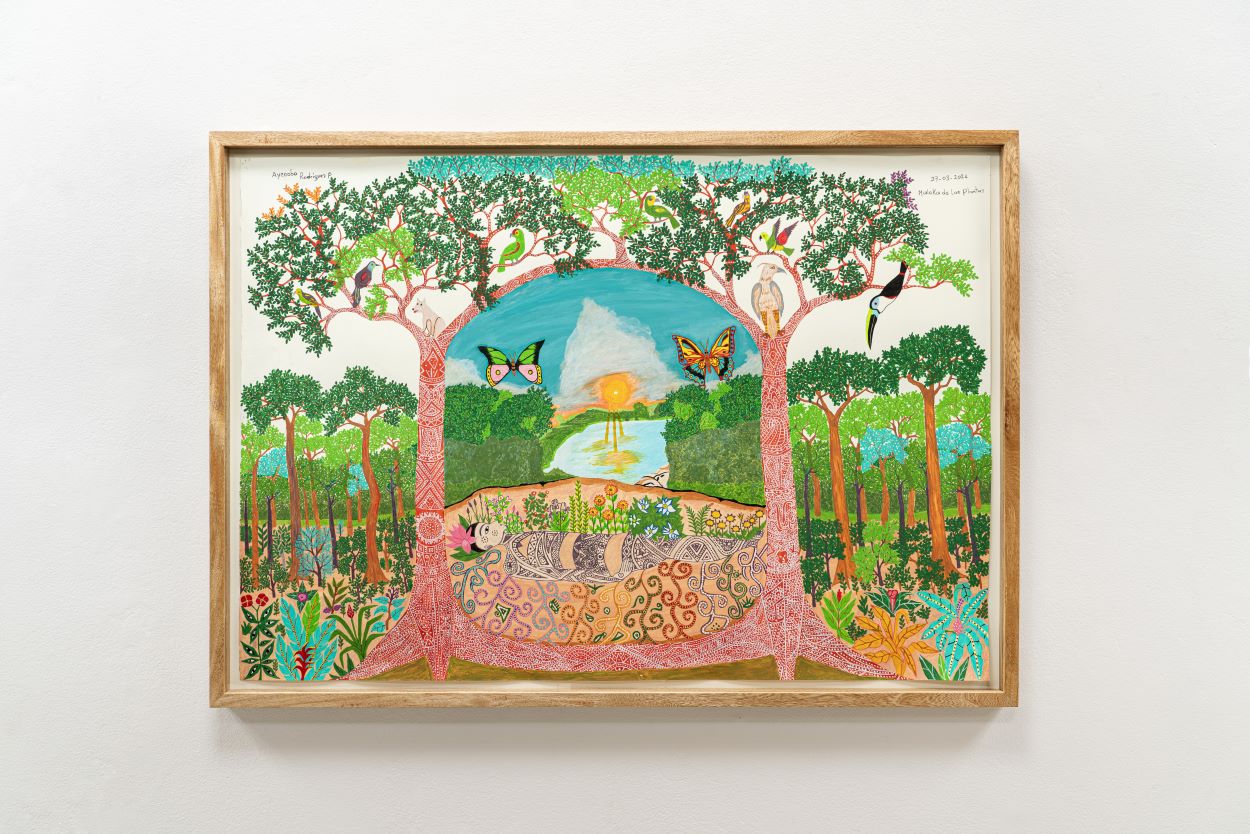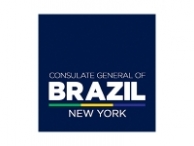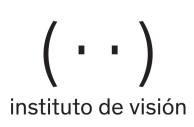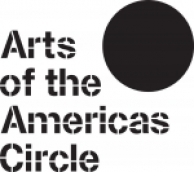Amazonia Açu
On view:
through
Amazonia Açu
Art at Americas Society is pleased to present Amazonia Açu, an exhibition that provides a kaleidoscopic overview of the aesthetic, cultural, and material diversity found in Amazonia as a means to upend flattening generalizations typically associated with the region and to reframe discourse on the subject within a contemporary context. Led by curatorial advisor Keyna Eleison and co-curated by a committee of representatives from all nine states (Bolivia, Brazil, Colombia, Ecuador, French Guiana, Guyana, Peru, Suriname, and Venezuela) of the territory, the exhibition presents over 50 works by 34 local artists and collectives.
For an exhibition about the cultural production of Amazonian communities to be organized around principles of Western statehood involves a contradiction that we acknowledge and hope to directly address. Given that our institution is housed in a policy center, our art program is uniquely situated to think through such paradoxes and consider what the role of cultural diplomacy should be in shaping art historical discourse.
Eleison describes Amazonia Açu as a nine-faceted prism which “stands as an invitation to unravel colonial myths and clear spaces for different epistemologies. Each curator in this exhibition is one face of the prism, radiating their unique and indispensable perspective to help take account of Amazonia’s immensity.” By highlighting the different intellectual and artistic approaches implemented by artists from the Amazon, the exhibition places emphasis on and celebrates the multiplicities found throughout the region. Together, the artworks reflect how the artists engage with a variety of topical questions, including methods of artistic production, modes of knowledge sharing, community engagement, land rights politics, cultural heritage, and spirituality, and how they relate to our current moment.
The artists and collectives participating in this exhibition include: Danasion Akobe, Angélica Alomoto, Pablo Amaringo, Johan Amiemba, Lola Ankarapi, Chonon Bensho, Darrell A. Carpenay, Elías Caurey Caurey, Colectivo TAWNA, Comunidad Weenhayek, Estela Dagua, PV Dias, Sara Flores, Dawa García, Sheroanawe Hakihiiwe, Shaundell Horton, Sri Irodikromo, Carlos Jacanamijoy, Wilfrido Lusitande Piaguaje, Thiago Martins de Melo, Hélio Melo, Mary Morales Barrientos, NouN, Claudia Opimí Vaca, Bernadette Indira Persaud, Javier Puunawe, Abel Rodríguez (Mogaje Guihu), Aycoobo (Wilson Rodríguez), Nancy Santi, Nelly Sheimi, T2i, Agustina Valera and Oliver Agustín, Gê Viana, and Santiago Yahuarcani.
Keyna Eleison served as curatorial advisor and the exhibition was cocurated by Grace Aneiza Ali, Christian Bendayán, Elvira Espejo Ayca, Diana Iturralde, Miguel Keerveld, NouN and T2i, Mateus Nunes, Luis Romero, and María Wills.
To accompany the show, we will present a series of public programs and publish a catalogue.
The exhibition will be on view from September 3, 2025 to April 18, 2026 at Americas Society.
Curators
Grace Aneiza Ali is a Guyanese-born curator-scholar of contemporary art of the Global South, whose work explores the intersections of art and migration. She is also an assistant professor in the Department of Art at Florida State University and is the 2024–25 Andrew W. Mellon Foundation Fellow at The Huntington. Her book, Liminal Spaces: Migration and Women of the Guyanese Diaspora, explores the art and migration narratives of women of Guyanese heritage. Ali serves as the editor-in-chief of the College Art Association’s Art Journal Open and is a member of the board of advisors for British Art Studies.
Christian Bendayán is a self-taught artist whose work has strengthened Amazonian values and aesthetics in Peruvian culture. In 2019 he represented Peru at the 58th Venice Biennale and he has participated in major biennials across Latin America. His art reinterprets the Amazonian landscape, denounces violence against Indigenous and trans communities, and critiques environmental destruction and transculturation. A key promoter of Amazonian art, he has curated over fifty projects highlighting Indigenous, popular, and riverine artists. The former director of the National Institute of Culture of Loreto, he received the National Culture Prize and founded Bufeo.Amazon+Art to reclaim the river as a space for creativity.
Keyna Eleison is a curator, writer, researcher, griot heiress and shaman, narrator, singer, ancestral chronicler, and cultural manager. She holds an M.A. degree in art history and a specialist degree in history and architecture from the Pontifical Catholic University of Rio de Janeiro (PUC-Rio) and a B.A. degree in philosophy from the Federal University of Rio de Janeiro (UFRJ). She is a member of the African Heritage Commission for the laureation of the Cais do Valongo region as a World Heritage Site (UNESCO). She served as manager of all the cultural centers in the Municipality of Rio de Janeiro between 2015 and 2017 and pedagogical coordinator of the Escola de Artes Visuais do Parque Lage between 2018 and 2019. She was the curator of the 10th SIART International Biennial in Bolivia and the artistic director of the Museum of Modern Art in Rio de Janeiro (MAM Rio)between 2020 and 2023, as well as the curator of the 1st Amazon Biennial in 2023. She is currently a columnist for Contemporary And, the director of research and content for the Amazon Biennial, and an at-large cocurator of the 36th São Paulo Biennial. She works in the development of exhibitions and the meanings of works of art and artists, as well as guiding artistic processes, curating exhibitions, teaching art, and coordinating art education and narrative to pass on and capture oral knowledge.
Elvira Espejo Ayca is a prominent Indigenous artist, cultural administrator, and researcher. Born in the Qaqachaka ayllu (Eduardo Abaroa Province, Oruro, Bolivia), her practice is linked to textiles, oral tradition, and poetry. With countless publications to her name, she is the director of the National Museum of Ethnography and Folklore (MUSEF) in La Paz. She received the 2020 Goethe Medal, an official award of the Federal Republic of Germany, for her work and commitment to cultural exchange. The importance of her work lies in the dialogue between the practice and knowledge of Indigenous communities and their intersection with academia, cultural management, and museums.
Diana Iturralde is the 2024–26 Cisneros Institute Research Fellow and a Ph.D.candidate in art history at Rutgers University. She specializes in modern and contemporary art from Latin America, and her dissertation work examines visual representations of cultural and environmental transformations in the Andean-Amazon region from the nineteenth century to the present. Diana is affiliated with the Andean-Amazonian Studies Working Group and the Environmental Humanities and Environmental Justice Working Group at Rutgers University. She has participated in the Center for Curatorial Leadership seminar and the GettyFoundation’s The Amazon Basin as Connecting Borderland seminar from 2023 to 2025.
Miguel Keerveld is an independent curator, artist, and certified coach from Suriname. In collaboration with Readytex Art Gallery in Paramaribo, Suriname, his work intersects with curation, artistic research, art-producing, and writing. He is formally educated in civil engineering and subsequently undertook a social worker’s program with specialization in coaching and counseling. For over a decade Miguel has been curating exhibitions, coordinating in- and outdoor events, and providing risk-based assessments for business processes as a certified ISO 9001 lead auditor in the position of director and founder of DEAM Advisory LLC.
NouN is a visual artist who lives and works between French Guiana and Paris, exploring several disciplines including painting, drawing, and photography. She was trained as an artist in Paris, where she also had her first solo exhibition, Dans les yeux, in 2019. In 2020 she joined the Art and Image Department of the École Kourtrajmé, run by the artist JR. She has participated in several group exhibitions in Paris, notably at the Centquatre-Paris and the Galleria Continua. In 2022, she and artist T2i created Manman Dilo, a multidisciplinary exhibition shown in French Guiana, Paris, and several cities in Brazil. Today, NouN continues to work on questions of body representation, the decolonized female gaze, and multiple identities.
Mateus Nunes is a curator, art critic, and researcher from the Brazilian Amazon, currently based in São Paulo. Nunes is an assistant curator at the Museu de Arte de São Paulo (MASP). He holds a Ph.D. in the history of art from the University of Lisbon, Portugal, and has completed postdoctoral fellowships in Amazonian studies at the Universidad SanFrancisco de Quito, Ecuador and in the history of art and architecture at Universidade de São Paulo, Brazil. His writings are frequently published in Artforum, ArtReview, Flash Art, Frieze, Mousse, and various specialized academic journals.
Luis Romero is a visual artist, cultural administrator, curator, and independent editor. Since 2016, he has been the codirector of ABRA in Caracas. From 1999 to 2010, he was the editor of Pulgar, where he also occasionally published work. From 2005 to 2015, he was the founder and director of Oficina #1, an independent contemporary art space in Caracas. From 2013 to 2016, he was a member of the board of directors of TAGA (Taller de Artistas Gráficos Asociados) in Caracas. In 2007, he participated in documenta 12 in Kassel, Germany. From 2000 to 2004, he was the director of the artist residency program Fundación La Llama in Caracas. He has received the following awards: AICA Prize, Difusión del Arte Venezolano, for the research project ArchivoAbierto, Caracas (2013); Orientation Trip Grant, Prince Claus Fund, Amsterdam (2010); CIFO Grants & Commissions Program Award, Miami (2008); UNESCO-Aschberg Bursary for Artists Residency at the Rijksakademie, Amsterdam (1995).
T2i is a rapper, graphic designer, and music video director who lives and works in Roura, French Guiana and graduated from the Campus Fonderie de l’Image outside Paris. His musical universe is filled with ebullient and minimalist hip-hop sounds, and, with training in graphic design and videography, the image is his testing ground. From visuals to music, everything is made by him to render a singular creative universe. In 2022, he and the artist NouN created Manman Dilo, a multidisciplinary exhibition shown in French Guiana, Paris, and several cities inBrazil. T2i has a strong connection to his native Creole culture, which is reflected in his work. He often addresses themes related to identity, daily life, and social issues in French Guiana.
María Wills is an independent curator whose main projects reexamine official historical narratives in art. Her co-curated exhibitions Sembrar la duda: Indicios sobre las representaciones indígenas en Colombia and Wametisé: ideas para un amazofuturismo highlighted the need for Indigenous communities to have their own governance in order to be the narrators of their own creations. Previously, for the 2019 MOMENTA Bienniale de l’image, titled The Life of Things, she presented a critique of the categories that define cultural objects as exotic or “non-Western,” as well as other aspects of the crisis of creativity in our consumer society. She was the director of the Museo de Arte del Banco de la República from 2020 to 2024, where she promoted diverse projects that problematize and redefine the role of art museums in a country like Colombia.
"An ambitious survey of contemporary practices," says the website. "Amazonia Açu is as beautiful as it is polite and diplomatic."
La exhibición "pone de relieve el arte de la Amazonía y desafía la visión occidental de la región", dice la agencia de noticias.
"A mostra reúne 34 artistas e coletivos dos nove países que compõem a Pan-Amazônia", diz o jornal.
"The show is co-curated by a committee of representatives from each country within the Amazon region," says the art website.
La muestra "celebra la riqueza cultural, histórica y estética de la región amazónica", dice el periódico.
"Americas Society presents a pluralistic image of the Amazon rainforest," says the art publication about the new show.
The presentation of Amazonia Açu is made possible by generous support from the William Talbott Hillman Foundation, the Robert Rauschenberg Foundation, the Consulate General of Brazil in New York with Instituto Guimarães Rosa, the Cowles Charitable Trust, the New York City Department of Cultural Affairs in partnership with the City Council, and the New York State Council on the Arts with the support of the Office of the Governor and the New York State Legislature. In-kind support is provided by the Hochschild Correa Collection and Instituto de Visión.
Americas Society acknowledges the generous support of the Arts of the Americas Circle members: Amalia Amoedo, Estrellita B. Brodsky, Virginia Cowles Schroth, Emily Engel, Isabella Hutchinson, Carolina Jannicelli, Diana López and Herman Sifontes, Elena Matsuura, Maggie Miqueo, Maria Mostajo, Antonio Murzi, Gabriela Pérez Rocchietti, Marco Pappalardo and Cintya Poletti Pappalardo, Carolina Pinciroli, Erica Roberts, Sharon Schultz, and Edward J. Sullivan.








